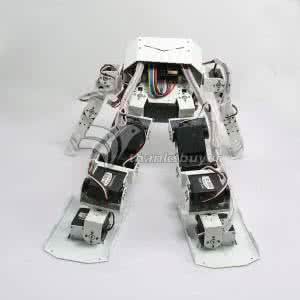One of the main challenges in autonomous robotic exploration and navigation in unknown and unstructured environments is determining where the robot can or cannot safely move. A significant source of difficulty in this determination arises from stochasticity and uncertainty, coming from localization error, sensor sparsity and noise, difficult-to-model robot-ground interactions, and disturbances to the motion of the vehicle. Classical approaches to this problem rely on geometric analysis of the surrounding terrain, which can be prone to modeling errors and can be computationally expensive. Moreover, modeling the distribution of uncertain traversability costs is a difficult task, compounded by the various error sources mentioned above. In this work, we take a principled learning approach to this problem. We introduce a neural network architecture for robustly learning the distribution of traversability costs. Because we are motivated by preserving the life of the robot, we tackle this learning problem from the perspective of learning tail-risks, i.e. the Conditional Value-at-Risk (CVaR). We show that this approach reliably learns the expected tail risk given a desired probability risk threshold between 0 and 1, producing a traversability costmap which is more robust to outliers, more accurately captures tail risks, and is more computationally efficient, when compared against baselines. We validate our method on data collected a legged robot navigating challenging, unstructured environments including an abandoned subway, limestone caves, and lava tube caves.
翻译:在未知和无结构环境中自主机器人探索和导航的主要挑战之一是确定机器人能够或不能安全移动的地点,这是在未知和无结构环境中自主机器人探索和导航的主要挑战之一。这一决定的一个重大困难来源是随机性和不确定性,其原因包括本地化错误、传感器宽度和噪音、难以建模的机器人地面相互作用以及汽车运动的干扰。这个问题的典型方法依赖于对周围地形的几何分析,这些地形容易出现模型错误,而且可以计算成本昂贵。此外,模拟不确定的易变成本的分配是一项困难的任务,加上上述各种错误源。在这项工作中,我们采取了一个有原则的学习方法来解决这一问题。我们引入了一个神经网络架构,以强有力地学习可翻转成本成本成本的分布。因为我们的动机是保护机器人的生命,我们从学习尾风险的角度来应对这一学习问题,即:在轨迹定价值上和轨道上(CVaR)的机器人(CVaR),我们表明,这一方法可靠地了解了预期的尾风险,因为预想在0和1之间有风险阈值的阈值。我们制作了一个更加稳妥的轨道,在比的轨道上进行更精确的精确的计算,在比较的轨道上,我们所收集的轨道上,一个更精确的轨道上,一个更具有成本的基底值的计算风险。




